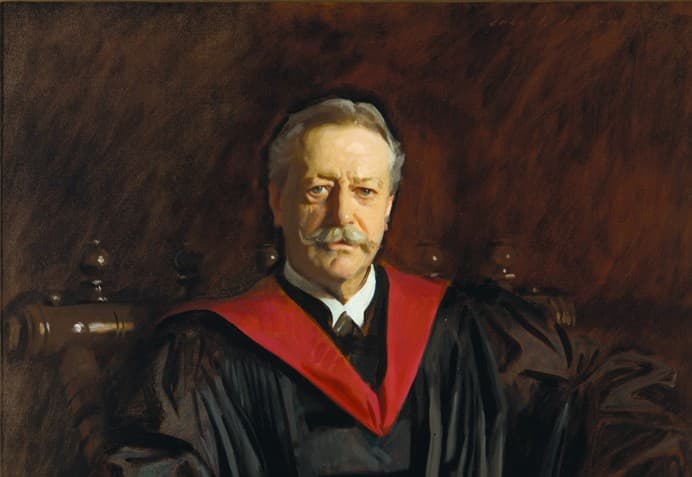Harvard Scapegoats One of Its Own Presidents
At the Supreme Court, a riveting moment in the argument over affirmative action.

The riveting moment in the argument over affirmative action at the Supreme Court Monday was when Harvard threw one of its own presidents under the bus. That was A. Lawrence Lowell, who led the university for a generation in the early 20th century. Lowell was fingered as the villain of the piece by Harvard’s lawyer, Seth Waxman, after Justice Neil Gorsuch asked if they could “shift gears” and then said: “What do we do about history here?”
General Waxman — a former solicitor general of America — pointed out that Harvard’s effort to diversify its student body, both on “viewpoint” and “geography,” went back to before the Civil War. Then said he: “Harvard acknowledges, and is ashamed, that in 1920, one of its presidents, President Lowell, decided that there were too many Jews.” He went on to denounce the “racist antisemitic policy of a single Harvard president.”
We were listening live on the internet, and when General Waxman said that, we stood up and stared agape. Lowell, who once tried to bar blacks from Harvard Yard, might have been an antisemite. We’re not so sure that can be adduced from his admissions policy. He wanted to cap the ratio of the student body that was Jewish at 15 percent when it was running at 20 percent and when Jews were but a small sliver of the U.S. population.
If that’s antisemitism, let’s all move to America. General Waxman went on to use the word “insubstantial” to describe the notion that President Lowell’s policies toward Jews are comparable to Harvard’s current policy toward Asian applicants. After all, Mr. Waxman pointed out, admissions are currently made by a 40-person committee that, sitting en banc, discusses each applicant individually. Whose case is Mr. Waxman making?
Far be it from us to advise a titan like General Waxman on how to argue a case, but, at least in our view, it would have been more consistent to have defended President Lowell on this head, and not just because he also did much to create the modern Harvard. He established the House system, and made it possible for students to select a subject in which they would major. He devised the small group learning known as the tutorial system.
In his pursuit of a Jewish quota President Lowell was rebuffed by Harvard’s governors, who argued that Harvard College must “maintain its traditional policy of freedom from discrimination on grounds of race or religion.” Thwarted in his pursuit of a hard cap, Lowell added a “character” requirement to Harvard’s admissions apparatus, using that filter to suppress the number of Jews to, by the time Lowell left, 10 percent of the student body.
If Lowell’s pivot from a hard quota to a soft tipping of the scale is hauntingly familiar, it is because the comparison with what Harvard is accused of doing today might not be not so insubstantial after all. Certainly not in the view of Students for Fair Admissions, which is levying the case to reform Harvard and reckons Harvard is dodging high court doctrine that prohibits quotas but allows using race as “one factor among many.”
Which is why we stood agape. It’s just illogical for Harvard to disown President Lowell while it mimics him and names one of its glorious Houses for him. Far more logical is to listen to Students for Fair Admissions, who are trying to open the door to the future. And hearken to the university’s famous hymn — “Fair Harvard” — which warns against mooring oneself to moss-covered error as the world on truth’s current glides by.

